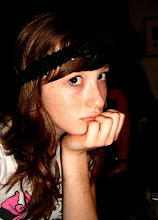- to follow a particular character
- to give a feel for the surroundings
From research that I found I noted that continuous shots (long takes) has been around since film was invented as in those days they didn't have any edits. Alfred Hitchcock's 'Rope' (1948) was one of the first noticeable films to use long unedited takes (for story telling purposes).
"[Rope] was an entire film shot in real time created by seamless cutting together a series of long 8-10 minute shots made to look like one. In 1948 it was a bold and unprecedented experiment for Hitchcock. The film works because its takes place entirely in one room for 80 minutes, so there was limited movement and lighting changes."
I found 2 examples of tracking shots used effectively.
'Atonement' (2007)
This scene gives us an insight into life in the army during the time of the war. It is very powerful and emotive. It starts by following the central character (Robbie) walking along the beach taking in his vast surroundings. At the beginning of the shot he can smell the sea and so rushes in that direction as he believes he will be able to get a boat home. There is a CU of Robbie's face to show the shock of what he can see, the vast numbers of soldiers waiting around. The audience watching now follow Robbie as he walks through the crowds on the beach. This scene is less about seeing facial expressions, and more about establishing the surroundings around, and so LS's and MS's are used so that you can see a great deal more of the action. This scene is powerful as it shows the brutality of the war (horses being killed) but then also how the soldiers are just normal guys, looking for a way home (choir singing, swinging on carousel etc). The tracking shot makes the scene particularly upsetting and you see possibly thousands of soldier, most wounded and you feel a great amount of sympathy. I believe this is one of the most effective tracking shots as because it is so long (5 minutes) it allows to to conjure up lots of emotion, rather than perhaps lots of smaller shots of the beach. It slows the pace of the film tremendously, i believe, because it wants to make you think about the war and think about how it is affecting all these men. Also it helps to focus you and concentrate, as the beginning is made up of a series of flashbacks. From some pictures i have seen i think this was shot using a handheld camera.
'Boogie Nights' (1997)
This particular tracking shot is used at the beginning of the film to establish characters and it's surroundings. It gives you a taste of whats to come in the rest of the movie. The very start has a very peculiar camera technique as it goes upwards, and then sideways to read the words on the sign. I liked this bit as it was quirky and fun. The scene shows the lively night life of this south California town. As someone, who appears to be the nightclub owner greats people, we are slowly introduced to the central characters. It shows a fun environment where everyone is connected and knows each other. Unlike the scene in Atonement, in which it is used to slow the pace down, this clip actually keep the paced relatively quick by using a variation of CU's, MS's and LS's.

No comments:
Post a Comment